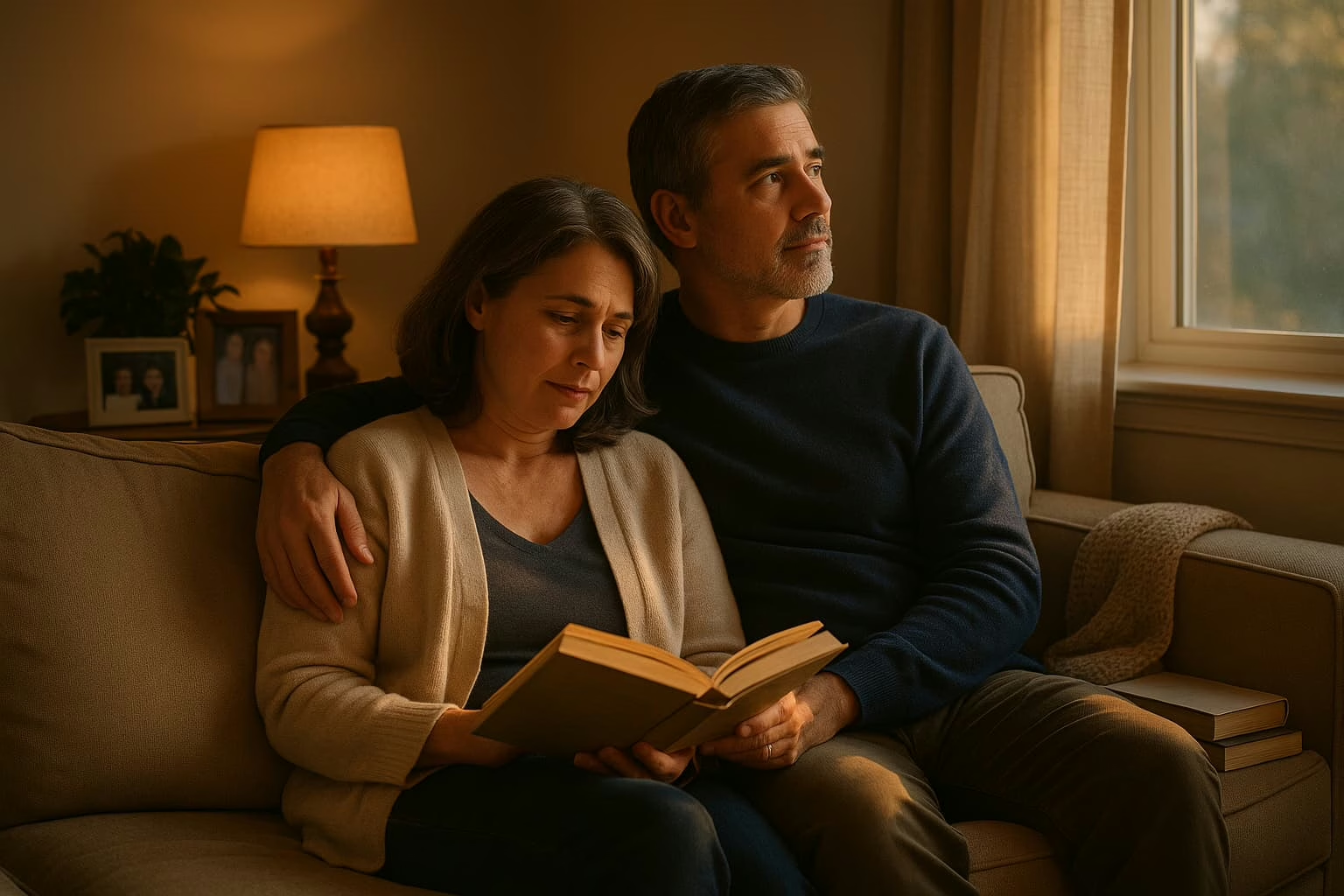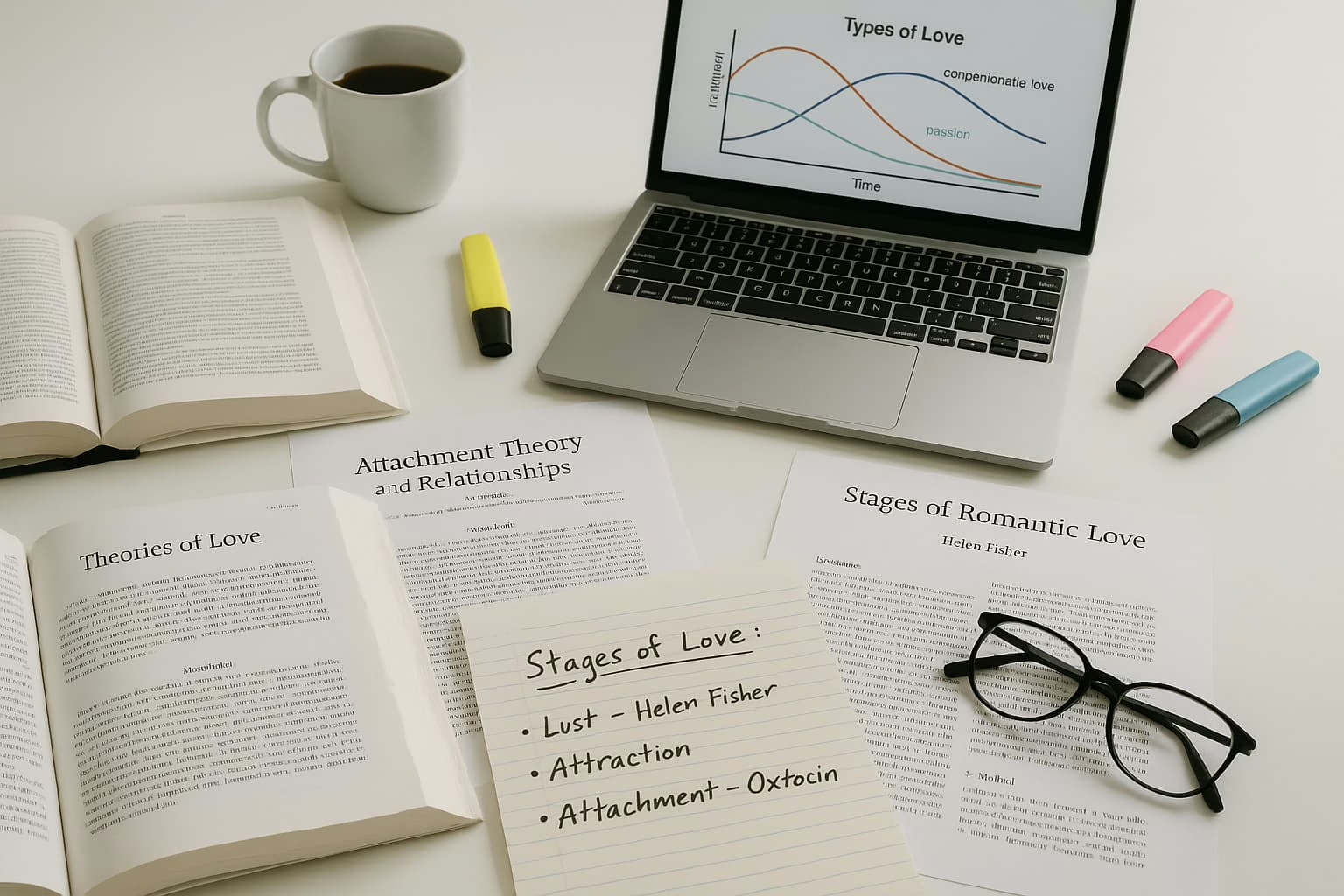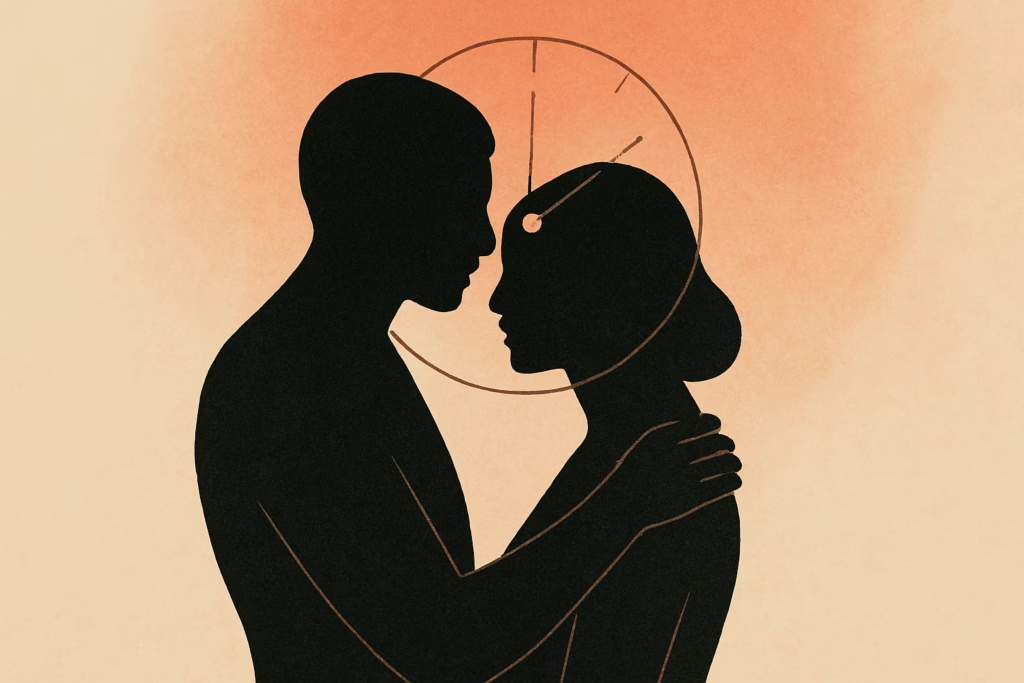
The question haunts countless couples: when the butterflies stop fluttering and the heart-racing anticipation of seeing your partner fades into comfortable routine, does it mean love is dying? Popular culture perpetuates what researchers call the “passion fade myth” – the belief that declining passion inevitably signals relationship doom.
But science tells a different, more hopeful story. Research spanning decades reveals that passionate love and lasting love are not just different – they’re often incompatible. The end of passion isn’t the end of love; it’s often the beginning of something deeper, more stable, and ultimately more satisfying.
Understanding the Passion Fade Myth
The passion fade myth suggests that relationships follow a predictable downward trajectory: initial intense attraction and excitement gradually diminish until couples either break up or resign themselves to passionless partnerships. This myth is so pervasive that many people view the natural evolution of romantic feelings as relationship failure.
Dr. Helen Fisher, anthropologist and leading researcher on love, identifies this misconception as one of the most damaging beliefs about relationships. “People think that if they’re not feeling that intense, obsessive, passionate love, then something is wrong,” Fisher explains. “But that’s not how sustainable love works.”
The myth is particularly harmful because it:
- Causes unnecessary anxiety about relationship health during normal developmental phases
- Creates unrealistic expectations for long-term relationships
- Leads couples to abandon healthy partnerships during natural transitions
- Prevents people from recognizing and nurturing deeper forms of love

The Science of Love Evolution
Passionate Love vs. Companionate Love
Psychologist Elaine Hatfield’s groundbreaking research distinguishes between two primary types of romantic love:
Passionate Love: Characterized by intense physical attraction, idealization of the partner, intrusive thinking, and emotional highs and lows. This type of love activates the brain’s reward system, flooding it with dopamine, norepinephrine, and phenylethylamine – creating an almost addictive cycle of craving and satisfaction.
Companionate Love: Built on intimacy, commitment, shared experiences, and deep affection. This love activates different brain regions associated with attachment, security, and long-term bonding, primarily involving oxytocin and vasopressin.
Research consistently shows that passionate love typically peaks within the first 6-24 months of a relationship, while companionate love can continue growing for decades. This isn’t relationship decline – it’s relationship maturation.
The Neurochemistry of Love Stages
Dr. Fisher’s brain imaging studies reveal that different types of love literally light up different areas of the brain:
Early Passionate Love: Activates the ventral tegmental area (VTA), associated with motivation, focus, and craving. Partners experience heightened energy, euphoria, and obsessive thoughts about each other.
Mature Attachment: Activates the posterior superior temporal sulcus and temporoparietal junction, areas associated with social cognition, empathy, and secure attachment. This creates feelings of calm, security, and deep understanding.

The transition from passionate to companionate love isn’t a loss – it’s an evolution toward sustainability. The intense neurochemical state of early passion is literally unsustainable; if maintained long-term, it would be physically and emotionally exhausting.
The Triangular Theory of Love
Psychologist Robert Sternberg’s influential Triangular Theory of Love provides a framework for understanding how healthy relationships evolve. According to Sternberg, complete love consists of three components:
Intimacy: Emotional closeness, connectedness, and bondedness
Passion: Physical attraction and romantic excitement
Commitment: The decision to maintain love and stay together
Different combinations create different types of love:
- Infatuation: Passion alone (common in early attraction)
- Romantic Love: Intimacy + Passion (typical of early relationships)
- Companionate Love: Intimacy + Commitment (characteristic of long-term partnerships)
- Consummate Love: All three components (the ideal, though rare and fluctuating)
Sternberg’s research shows that while passion may decline, intimacy and commitment can continue growing indefinitely. The passion fade myth focuses only on one component while ignoring the strengthening of others.

Why Passion Fades (And Why That’s Normal)
Biological Reasons for Passion’s Decline
From an evolutionary perspective, intense passionate love serves a specific purpose: it bonds partners long enough to mate and begin raising offspring together. Once this biological imperative is met, the intensity naturally diminishes to allow for:
- Energy Conservation: Maintaining passion’s neurochemical state requires enormous energy that’s needed for other survival tasks
- Clear Thinking: The obsessive nature of passionate love can impair judgment and decision-making
- Broadened Focus: Couples need to attend to responsibilities beyond each other
- Attachment Development: Moving from attraction-based bonding to security-based bonding
Psychological Adaptation
Humans adapt to positive stimuli over time – a phenomenon called hedonic adaptation. The same neurochemical rewards that once created intense excitement become baseline normal. This isn’t specific to relationships; it happens with all pleasurable experiences.
Dr. Sonja Lyubomirsky’s research on happiness shows that people adapt to positive changes within 3-6 months. The excitement of a new relationship follows the same pattern as other positive life changes like job promotions or moving to a dream city.

What Actually Predicts Relationship Success
The Gottman Research
Dr. John Gottman’s decades of research with thousands of couples reveals that passionate intensity has little correlation with relationship longevity. Instead, successful long-term relationships are characterized by:
Emotional Attunement: Partners notice and respond to each other’s emotional bids for connection
Conflict Resolution Skills: The ability to argue constructively and repair after disagreements
Shared Meaning: Common goals, values, and vision for the future
Fondness and Admiration: Ongoing appreciation and respect for each other
Physical Affection: Regular, nonsexual touch and closeness
Notably, passionate attraction doesn’t appear on Gottman’s list of predictors for relationship success. In fact, couples who maintain extremely high levels of passionate intensity often struggle with the stability and security necessary for long-term partnership.
The Role of Attachment Security
Attachment theory research shows that secure attachment – characterized by comfort with intimacy and confidence in partner availability – is the strongest predictor of relationship satisfaction. Secure attachment creates:
- Emotional Regulation: Partners help each other manage stress and difficult emotions
- Exploration Support: Security in the relationship allows individual growth and risk-taking
- Conflict Resolution: Secure partners can disagree without threatening the relationship foundation
- Intimacy Development: Safety allows for increasing vulnerability and emotional connection

The Benefits of Love’s Evolution
Deeper Intimacy
As passionate obsession fades, couples often experience deeper emotional intimacy. Without the distracting intensity of early love, partners can:
- See Each Other Clearly: Move beyond idealization to love the real person
- Develop Genuine Understanding: Learn each other’s true thoughts, feelings, and motivations
- Share Vulnerabilities: Feel safe revealing authentic selves without fear of losing attraction
- Build Trust: Demonstrate reliability and commitment through actions over time
Improved Life Satisfaction
Research shows that people in long-term, stable relationships report higher life satisfaction than those constantly seeking passionate connections. Companionate love provides:
Stress Reduction: Having a reliable partner decreases cortisol and improves overall health
Goal Achievement: Stable relationships provide support for pursuing individual and shared objectives
Social Benefits: Established couples often have stronger social networks and community connections
Personal Growth: Security allows partners to take risks and develop individually
Enhanced Physical Intimacy
Contrary to popular belief, physical intimacy often improves as passionate love evolves. When couples move beyond performance anxiety and insecurity, they can:
- Communicate Needs: Feel safe expressing preferences and desires
- Focus on Connection: Prioritize mutual satisfaction over impressing each other
- Develop Comfort: Build physical familiarity and trust over time
- Reduce Pressure: Eliminate the need to constantly prove attraction

Debunking Related Myths
Myth: “If You’re Not Fighting, You’re Not Passionate”
Some people equate conflict intensity with relationship passion, believing that dramatic fights indicate strong feelings. Research shows the opposite: couples who frequently engage in intense conflict have higher rates of relationship dissolution and lower satisfaction.
Healthy couples may have disagreements, but they’re characterized by respect, problem-solving focus, and emotional regulation rather than dramatic emotional outbursts.
Myth: “Good Relationships Should Be Effortless”
Another harmful myth suggests that “true love” requires no effort – that right partners will maintain intensity without work. In reality, all healthy relationships require ongoing attention, communication, and intentional connection.
The difference is that mature couples invest effort in sustainable practices (quality time, appreciation, conflict resolution) rather than trying to recreate initial intensity.
Myth: “If You Love Someone, You’ll Never Find Others Attractive”
The passion fade myth often includes the belief that truly committed partners won’t notice or feel attracted to other people. Psychological research shows that noticing attractiveness in others is normal and doesn’t indicate relationship problems.
What matters is how people handle these normal human responses – secure couples can acknowledge attraction without acting on it or feeling threatened.

How to Navigate Love’s Evolution
Recognizing Normal Transitions
Understanding that declining passion is normal helps couples navigate transitions without panic. Warning signs of actual relationship problems differ from natural evolution:
Normal Evolution:
- Decreased frequency of butterflies and obsessive thoughts
- More comfortable, less anxious time together
- Increased ability to focus on other life areas
- Growing appreciation for partner’s character and values
Concerning Signs:
- Complete loss of physical affection
- Inability to resolve conflicts constructively
- Feeling emotionally disconnected or unsafe
- Loss of shared goals or values alignment
Cultivating Companionate Love
Couples can actively nurture the growth of companionate love through:
Quality Time: Regular, undistracted time together focused on connection
Appreciation Practices: Regularly expressing gratitude and admiration
Shared Experiences: Creating new memories and adventures together
Physical Affection: Maintaining nonsexual touch and closeness
Emotional Intimacy: Continuing to share thoughts, feelings, and vulnerabilities
Maintaining Physical Connection
While passion may fade, physical intimacy can be maintained and even improved through:
Communication: Open discussion about needs, preferences, and changes
Creativity: Trying new approaches without pressure for constant novelty
Mindfulness: Focusing on present-moment connection rather than performance
Patience: Allowing physical intimacy to evolve naturally with the relationship

When to Seek Help
While passion’s decline is normal, some situations warrant professional support:
Relationship Counseling May Help If:
- Communication has become consistently negative or avoided
- Conflicts escalate without resolution
- One or both partners feel consistently unhappy or unfulfilled
- Physical intimacy has disappeared entirely
- Partners feel like roommates rather than romantic partners
- Individual mental health issues are impacting the relationship
Individual Therapy May Help If:
- Personal anxiety about relationship changes is overwhelming
- Past relationship trauma is affecting current partnership
- Depression or anxiety is impacting relationship engagement
- Unrealistic expectations are causing relationship distress
Professional support can help couples distinguish between normal evolution and concerning patterns, providing tools for navigating transitions successfully.

The Research Verdict: Passion Isn’t Predictive
Longitudinal studies consistently show that initial passion levels don’t predict relationship outcomes. Dr. Ted Huston’s famous study following couples for 13 years found that those with the most intense courtships were more likely to divorce than those with gradual, friendship-based beginnings.
Similarly, research by Dr. Ellen Berscheid shows that couples reporting the highest levels of passionate love at the beginning of relationships don’t report higher satisfaction 2-3 years later compared to couples with moderate initial passion levels.
The passion fade myth persists because it confuses intensity with quality. But sustainable love is built on different foundations entirely.
Cultural Influences on the Myth
Media Representation
Movies, novels, and social media perpetuate unrealistic relationship expectations by focusing on:
- Initial attraction phases rather than long-term development
- Dramatic conflict and resolution rather than everyday compatibility
- Constant excitement rather than comfortable security
- Individual fulfillment through romance rather than partnership building
Consumer Culture
The same culture that promotes constant novelty and immediate gratification in consumer choices applies these principles to relationships. This creates pressure for relationships to provide continuous excitement and novelty rather than security and growth.
Lack of Relationship Education
Most people receive no formal education about healthy relationship development. Without understanding normal relationship stages, people interpret natural evolution as failure.
Conclusion: Redefining Relationship Success
The passion fade myth has caused countless couples to abandon healthy relationships during natural transitions, seeking the impossible dream of sustained intensity. But science reveals a more hopeful truth: the evolution from passionate to companionate love isn’t relationship failure – it’s relationship success.
When we stop measuring love by the intensity of butterflies and start appreciating the security of deep partnership, we discover something remarkable. The love that lasts isn’t the love that burns brightest initially – it’s the love that provides warmth, security, and connection through all of life’s seasons.
True relationship success isn’t maintaining the neurochemical high of early attraction. It’s building the emotional intimacy, secure attachment, and shared meaning that create a foundation for lifelong partnership. When passion fades, space opens for something deeper: the profound satisfaction of being truly known, consistently supported, and unconditionally accepted by another human being.
The end of passion isn’t the end of love – it’s the beginning of love’s most meaningful chapter.


